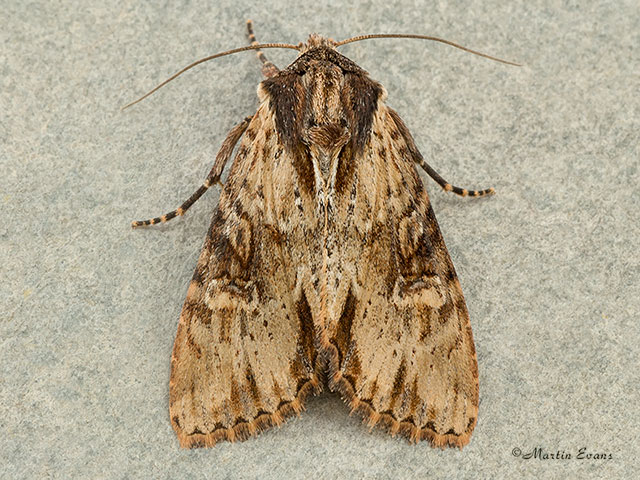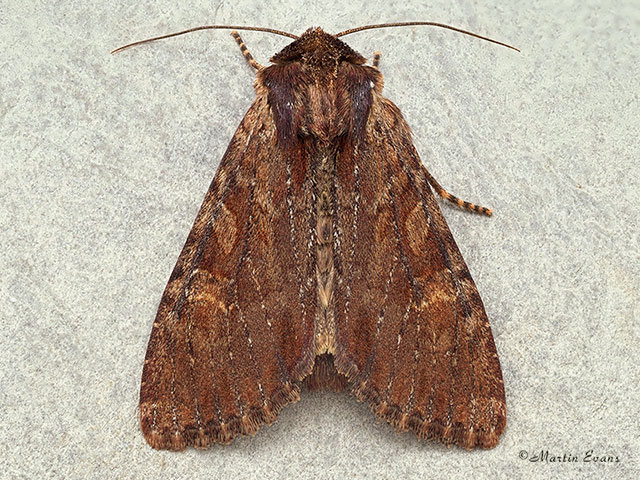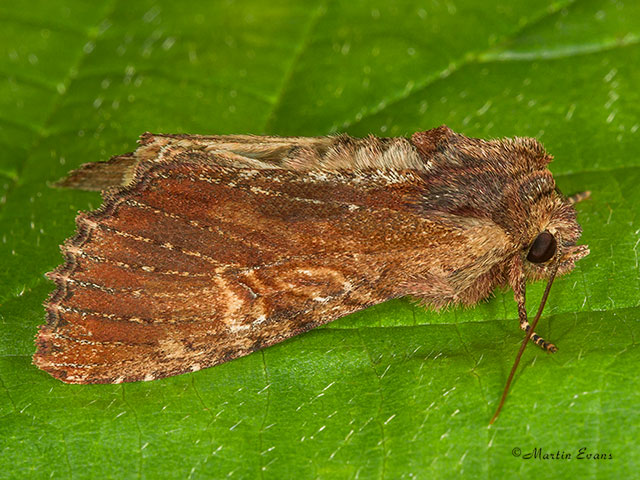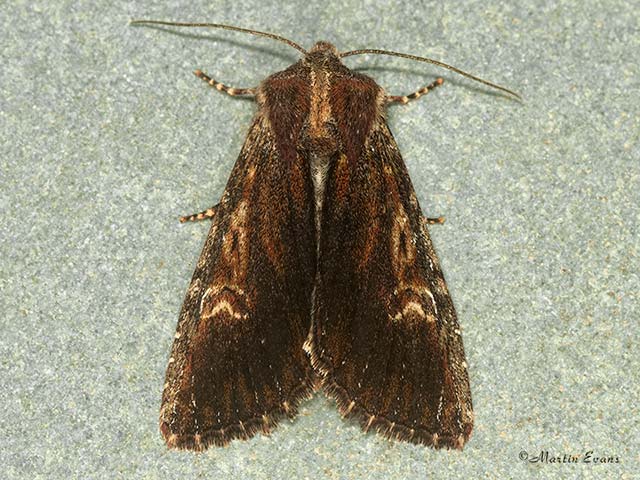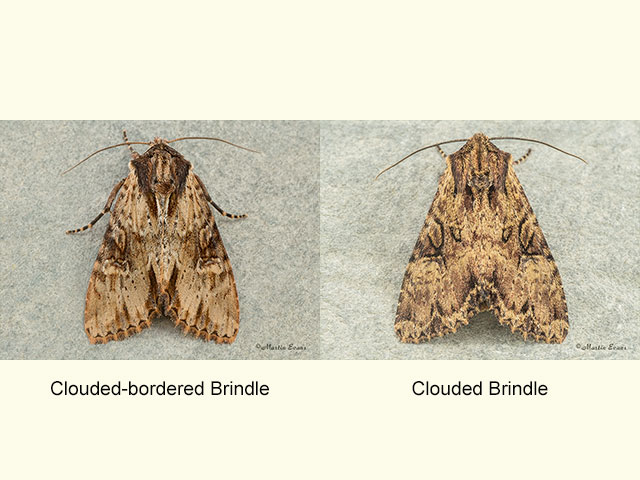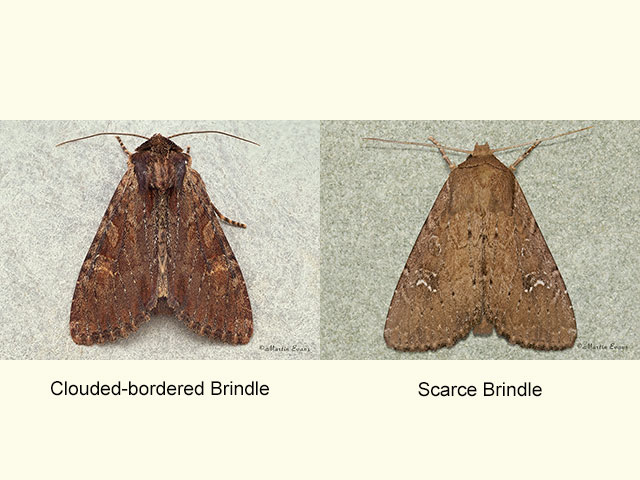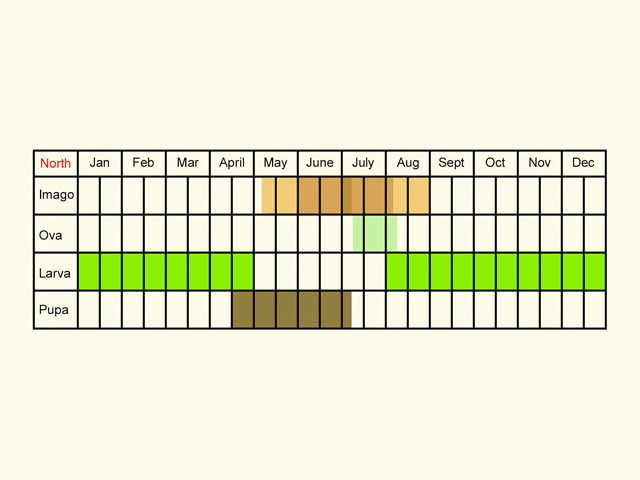Noctuidae
73.156 Clouded-bordered Brindle Apamea crenata (Hufnagel, 1766)
Common
Similar species: Clouded Brindle Apamea epomidion has an outer pale cross-line, with defined darts in that area and has a prominent black outline around the kidney mark, oval and the tooth on the outer side of the inner central crossline. The rare migrant Scarce Brindle is similar to the red-brown form of Clouded-bordered Brindle, but is larger (19 to 24mm), less pale at the base of the forewing, has a less elongated brown (not yellowish) oval, and a brown (not yellowish) kidney mark with a white outer edge.
Forewing: 18 to 22mm
Habitats: Woodland rides, moorland, coastal grassland, sand-dunes and gardens.
Habits: The moth flies from dusk when it visits flowers and sugar. It comes to light
Foodplant: The larva initially feeds on the flowers and seeds of Cock's-foot and other grasses. When larger it feeds nocturnally on the leaves of those grasses, hiding by day on the ground. It pupates in a cavity amongst the roots of its foodplant.
On the European mainland it has also been recorded feeding on Tufted Hair-grass, Reed Canary-grass, Fescues, Purple Moor-grass and reed grasses.
